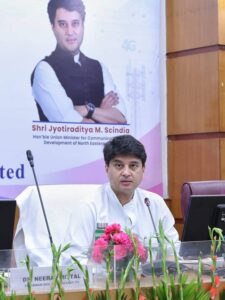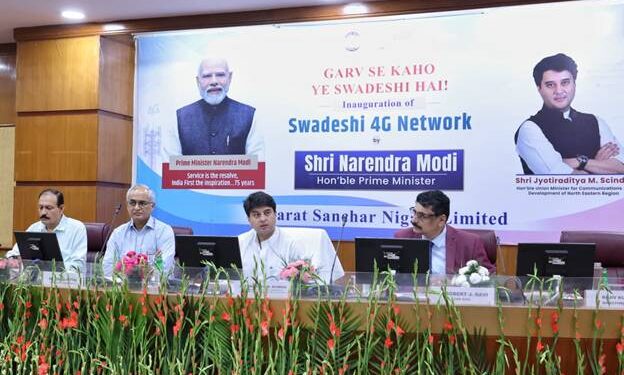NEW DELHI: Prime Minister Narendra Modi will launch India’s first fully indigenous 4G network and dedicate nearly 98,000 mobile towers to the nation on Saturday, Union Communications Minister Jyotiraditya M. Scindia said today at a media briefing.
The network, built on a swadeshi technology stack and designed to be upgraded to 5G, is already serving 22 million customers across the country. The rollout, Scindia said, marks a “historic step towards Viksit Bharat” and a milestone in India’s drive for telecom self-reliance.
Developed by Bharat Sanchar Nigam Ltd. (BSNL), the system integrates a core designed by the Centre for Development of Telematics (C-DoT), a radio access network from Tejas Networks, and integration by Tata Consultancy Services.
The initiative, backed by a ₹37,000-crore investment, also aims to extend coverage to more than 29,000 previously unconnected villages, including remote, border, and left-wing extremism-affected areas, through the Digital Bharat Nidhi program.
“What does this signify for the common citizen? It means that students in Bihar will have seamless access to online education, farmers in Punjab can track mandi prices in real time, soldiers in Kashmir will stay connected with their families, and entrepreneurs in the Northeast can access international markets,” Scindia told reporters.

Telecom Secretary Neeraj Mittal said India’s homegrown 4G stack, once viewed with skepticism, has now propelled the nation into the ranks of leading telecom equipment manufacturers. “This places India not only on the path to telecom self-reliance but also in a position to export to the world,” he said.
Officials said the Prime Minister’s unveiling will coincide with BSNL’s silver jubilee year and highlight India’s push to make telecom services universally accessible.
The swadeshi 4G rollout is part of the government’s vision of Aatmanirbhar Bharat and Digital Bharat, aiming to expand connectivity to 1.2 billion people and reinforce India’s emergence as a global telecom hub.

















